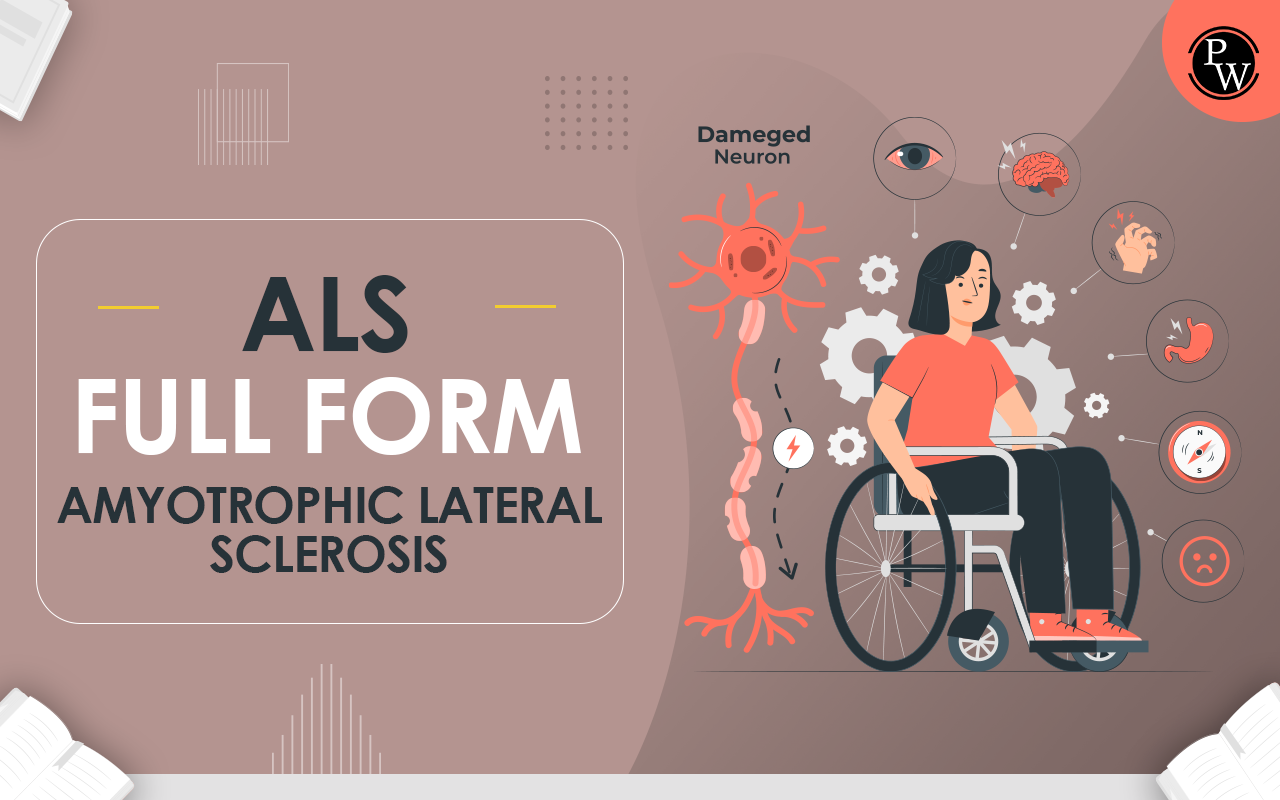

ALS Full Form: The full form of "ALS" is "Amyotrophic Lateral Sclerosis." Amyotrophic Lateral Sclerosis (ALS), often referred to as "Lou Gehrig's Disease," is a progressive neurodegenerative disorder affecting the nerve cells in the brain and spinal cord. This disease leads to the degeneration of motor neurons, which are essential for muscle movement. The primary objective in understanding ALS is to diagnose and manage the symptoms, ensuring a better quality of life for the affected individuals.
ALS outlines the progression and manifestation of symptoms, including muscle weakness, twitching, and eventual paralysis. It also highlights the challenges faced by patients, such as difficulties in speaking, swallowing, and breathing. The disease's exact cause remains unknown, but both genetic and environmental factors are believed to contribute. While there is currently no cure for ALS, ongoing research aims to uncover its mysteries and develop effective treatments.
In this article, you will learn about the ALS’ full form in English, its functions, and different other things associated with it.
ALS Full Form In English
"Amyotrophic Lateral Sclerosis" is the full form of the acronym "ALS." This term is derived from Greek words: "A" meaning no, "Myo" referring to muscle, "Trophic" meaning nourishment, "Lateral" indicating the areas in a person's spinal cord where portions of the nerve cells that signal and control the muscles are located, and "Sclerosis" meaning scarring or hardening. Thus, ALS translates to a condition where there's no muscle nourishment, leading to hardening or scarring.
ALS Full Form In Hindi
In Hindi, "ALS" stands for "एमीयोट्रोफिक लैटरल स्क्लेरोसिस." While the disease is universally recognized by its English acronym, understanding its nomenclature in various languages, including Hindi, is crucial for global awareness.
ALS Full Form In Medical
In the medical community, "ALS" is universally recognized as "Amyotrophic Lateral Sclerosis." It's a progressive neurodegenerative disease that affects nerve cells in the brain and spinal cord, leading to muscle weakness and, eventually, paralysis.
| NEET 2024 Exam Important Links | |
|---|---|
| NEET 2024 Syllabus | NEET 2024 Registration |
| NEET 2024 Eligibility Criteria | NEET Exam Pattern |
| NEET Previous Year Question Papers | NEET 2024 Admit Card |
Early Sign Of Amyotrophic Lateral Sclerosis
One of the initial symptoms of ALS is muscle weakness, especially in the arms and legs. Patients might experience difficulty in performing routine tasks like buttoning a shirt, climbing stairs, or even walking. Muscle twitching and cramps are also common early signs. As the disease progresses, these symptoms become more pronounced, affecting speech, swallowing, and respiratory functions.
What Is Amyotrophic Lateral Sclerosis?
Amyotrophic Lateral Sclerosis (ALS) is a severe neurodegenerative disorder that primarily affects the motor neurons responsible for controlling voluntary muscles. As the disease progresses, these neurons die off, leading to muscle atrophy and paralysis. While the exact cause of ALS remains unknown, both genetic and environmental factors are believed to play a role. It's a disease that knows no racial, ethnic, or socioeconomic boundaries, affecting people worldwide.

Symptoms Of ALS (Amyotrophic Lateral Sclerosis)
The symptoms of ALS can vary from person to person but generally include:
- Muscle weakness in the hands, arms, legs, or feet
- Muscle twitching and cramps
- Slurred speech and difficulty swallowing
- Difficulty breathing as the disease progresses
- Stiffness in muscles
- Involuntary weight loss
It's essential to note that while muscle involvement is a hallmark of ALS, the disease doesn't affect an individual's cognitive abilities or intelligence.
Conclusion
Amyotrophic Lateral Sclerosis (ALS) is a devastating neurodegenerative disease that affects thousands of people worldwide. While research continues to unravel its mysteries and search for a cure, awareness and understanding of the disease are crucial. Recognizing the early signs can lead to timely diagnosis, allowing for better management and improved quality of life for those affected. As global citizens, it's our responsibility to spread knowledge, support affected families, and contribute to ongoing research efforts.
Check NEET UG Important Links
| NEET Exam Important Links | |
| NEET 2024 | NEET Sample papers |
| NEET 2024 Exam Date | NEET Answer Key |
| NEET Chemistry Syllabus | NEET Physics Syllabus |
| NEET Biology MCQ | NEET Biology Syllabus |
ALS Full Form FAQs
Q1. What is the full form of the ALS test?
Q2. How do you get ALS?
Q3. What famous people have ALS?
Q4. What famous actress has ALS?
Q5. Is ALS becoming more popular?
Q6. How many people experience ALS?
Q7. Has anybody beat ALS?
Q8. What is the percentage of ALS?












